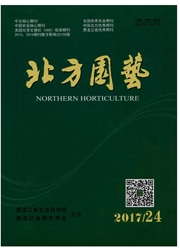

 中文摘要:
中文摘要:
基于辽宁省丹东市凤城北部山区土壤重金属污染严重的问题,采取野外调查的方法,寻找重金属忍耐型植物或具有(潜在)超富集特性的植物,以期为植物修复技术在城市工业废弃地中的应用提供重要的科学依据;同时运用原子吸收分光光度法测定优势植物中Cu、Zn、Pb、Cd重金属元素的含量,并计算植物对重金属的富集系数和转移系数。结果表明:羊胡子薹草对Cu的富集和转移能力较强;地榆和烟管头草对Cd的富集和转移能力较强。最终确定青城子铅锌矿废弃地植被重建的先锋物种:排土场中选取烟管头草、地榆、羊胡子薹草;尾矿库中选取兴安毛连菜、苦荬菜、白花败酱;周边山地中选取白桦、绣线菊、大籽蒿等植物。
 英文摘要:
英文摘要:
The field investigation towards plants and the measuring on the enrichment and metastasis potential towards heavy metal caused by dominant plants had been carried out in order to screen out the heavy metal resistant plants suitable for the soil condition in this research area or the plants with(potential) hyper-accumulator characteristics.Adopting the method of atomic absorption spectrometry to perform sample analysis.The analysis of measuring the heavy metal content of Cu,Zn,Pb and Cd and the calculation of the bio-accumulating coefficient and the biological transfer coefficient of dominant plants had been carried out.The results showed that sift the heavy metal resistant plants:selecting Carpesium cernuum,Sanguisorba officinalis and Cares callitrichos in waste dump of Qingchengzi lead-zinc mine area;selecting Picris dahurica,Ixeris denticulata and Patrinia villosa in tailing pond;selecting Betula platyphylla,Spiraea salicifolia and Artemisia sieversiana etc in surrounding mountainous regions as the poineer species of plant restoration on the abandoned land in research areas.
 同期刊论文项目
同期刊论文项目
 同项目期刊论文
同项目期刊论文
 期刊信息
期刊信息
